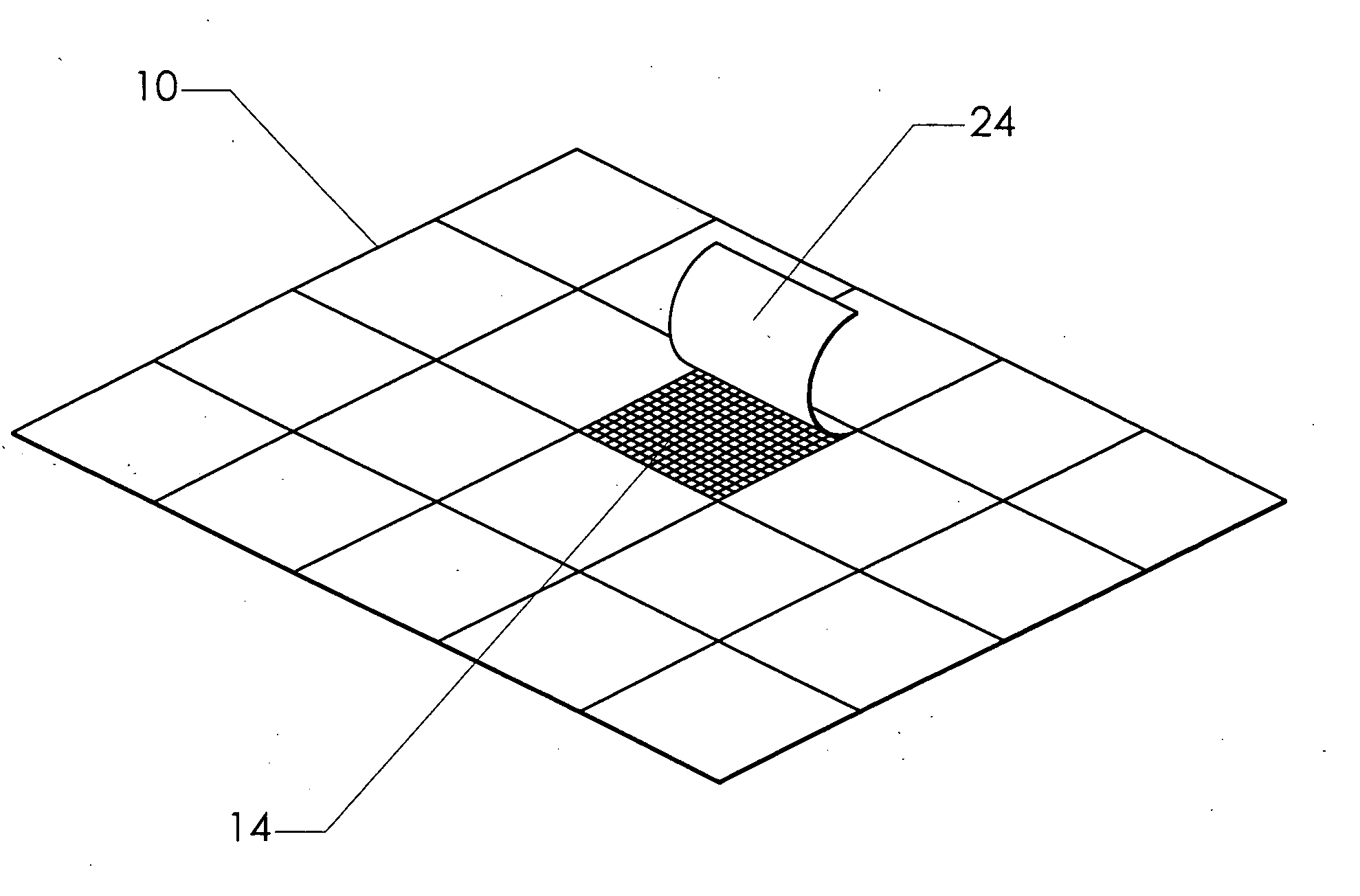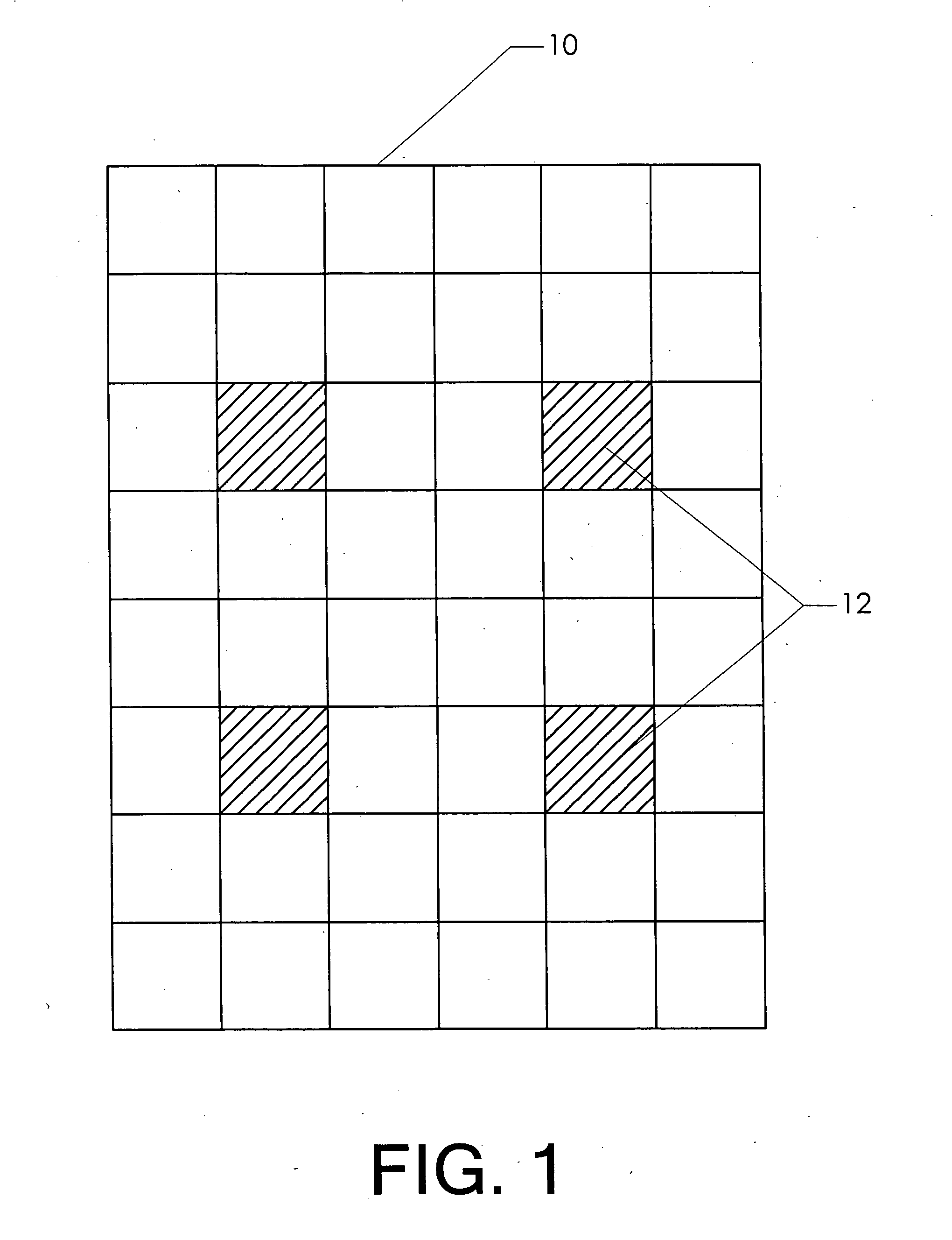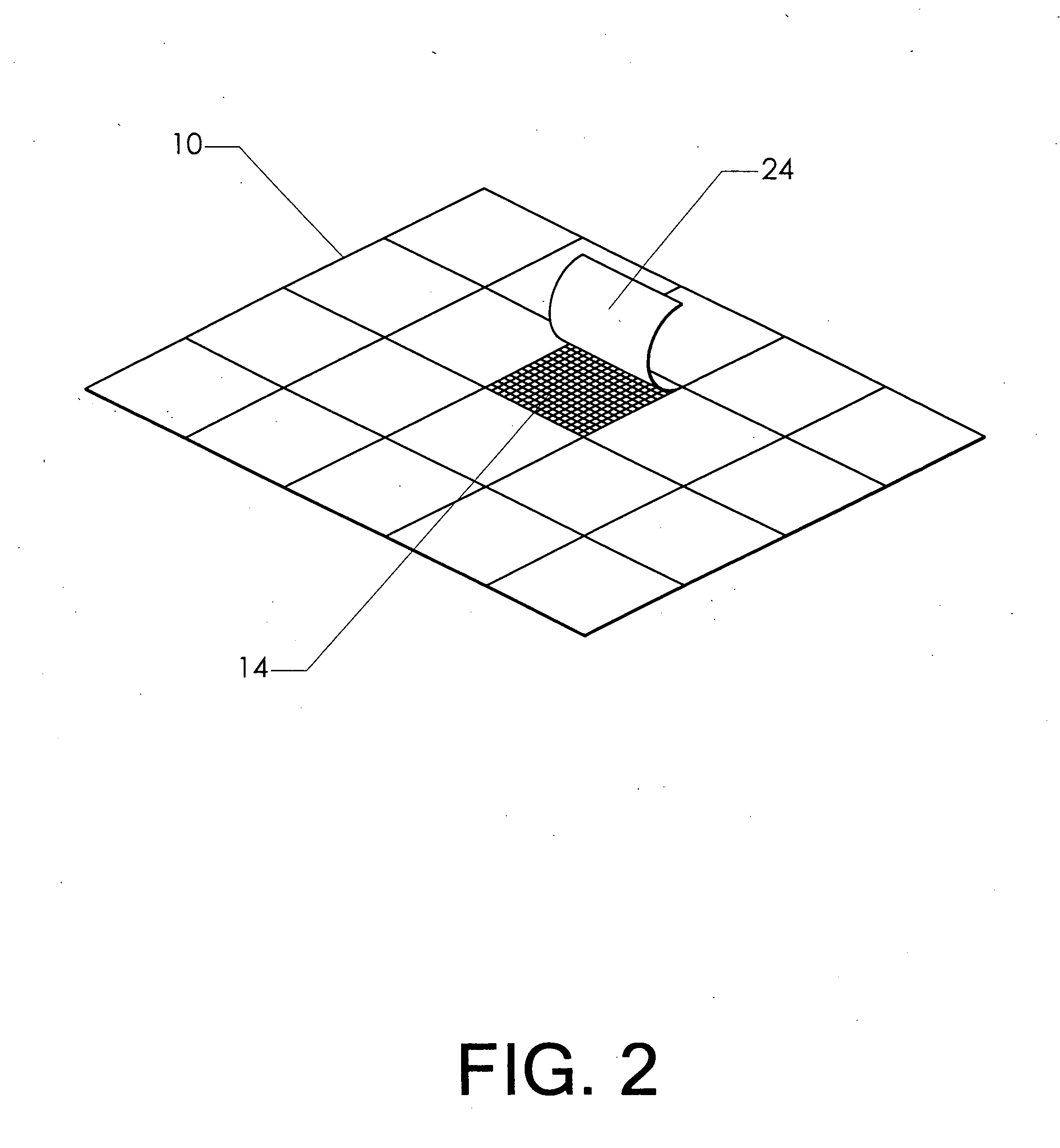Thermally-adaptive comforter with aesthetic design variability
- Summary
- Abstract
- Description
- Claims
- Application Information
AI Technical Summary
Benefits of technology
Problems solved by technology
Method used
Image
Examples
Embodiment Construction
[0021] The present invention provides a thermally-adaptive comforter which gives the user a greater amount of control over the temperature of his or her sleeping environment. The invention accomplishes this objective by providing a comforter with user-variable hatches.
[0022] A thermally-adaptive comforter is shown in FIG. 1. Comforter 10 features a multitude of hatches 12 in the top layer of the blanket. Comforter 10 can be any type of blanket. Common examples of comforters include those fabricated with a top and bottom layer such as patchwork quilts and down comforters; however, comforter 10 can also be a single-layered blanket.
[0023]FIG. 2 shows the component parts of the hatches and comforter. Each hatch is composed of a hatch cover 24 and a hatch opening 14. Hatch cover 24 can be made of the same material as the top layer of comforter 10, or it may be made of a dissimilar material.
[0024] Hatch cover 24 of comforter 10 is shown in the pulled back position to reveal hatch openi...
PUM
 Login to View More
Login to View More Abstract
Description
Claims
Application Information
 Login to View More
Login to View More - R&D Engineer
- R&D Manager
- IP Professional
- Industry Leading Data Capabilities
- Powerful AI technology
- Patent DNA Extraction
Browse by: Latest US Patents, China's latest patents, Technical Efficacy Thesaurus, Application Domain, Technology Topic, Popular Technical Reports.
© 2024 PatSnap. All rights reserved.Legal|Privacy policy|Modern Slavery Act Transparency Statement|Sitemap|About US| Contact US: help@patsnap.com










